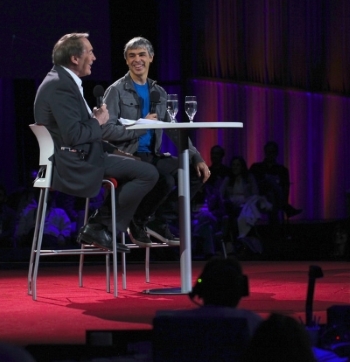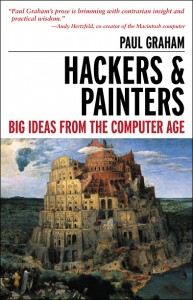Â
“I do not rush into constructive work. When I get an idea, I start right away to build it up in my mind. I change the structure, I make improvements, I experiment, I run the device in my mind.” – Nikola Tesla
Nikola Tesla had a theoretical approach to inventing. His theoretical approach to inventing was different from Thomas Edison’s experimental approach to inventing. Tesla would work the invention over in this mind and try to discern the fundamental principle on which the invention would be based. In my first post on Tesla, I discussed lessons for licensing inventions based on how Tesla’s AC power system was licensed to Westinghouse. In this second post, I’ll look at the process that Tesla undertook when inventing.
Nikola Tesla is an inventor best known for his contribution to the design of alternating current (AC). His AC power systems provided the foundation for the AC power systems we have today. Tesla invented (1) a new AC motor that used a rotating magnetic field, (2) a multiphase AC system used in generating and transmitting electric power, which was used in a hydroelectric project at Niagara Falls, (3) a high frequency high-voltage transformer (now known as a Tesla Coil), (4) new electric lamps, and (5) a combination steam engine and electronic generator, among other inventions. Bernard Carlson’s biography, Tesla: Inventor of the Electrical Age, provides a detailed look at Tesla’s life and work. Here’s how Tesla took to inventing.
Theoretical Approach to Invention
Tesla explained his theoretical approach to invention as contrasted with Edison’s experimental approach:
I have unconsciously evolved what I consider a new method of materializing inventive concepts and ideas, which is exactly opposite to the purely experimental of which undoubtedly Edison is the greatest and most successful exponent. The moment you construct a device to carry into practice a crude idea you will find yourself inevitably engrossed with the details and defects of the apparatus. As you go on improving and reconstructing, your force of concentration diminishes and you lose sight of the great underlying principle. You obtain results, but at the sacrifice of quality.
My method is different. I do not rush into constructive work. When I get an idea, I start right away to build it up in my mind. I change the structure, I make improvements, I experiment, I run the device in my mind. It is absolutely the same to me whether I operate my turbine in thought or test it actually in my shop. It makes no difference, the results are the same. In this way, you see, I can rapidly develop and perfect an invention, without touching anything. When I have gone so far that I have put into the device every possible improvement I can think of, that I can see no fault anywhere, I then construct this final product of my brain. Every time my device works as I conceive it should and my experiment comes out exactly as I plan it.
It is doubtful that the final product always worked exactly as he planned it. But, the excerpt shows that he thought that moving to experimental prototypes too soon forced the inventor to get too deep in the details of the invention. When deep in the details of prototyping the inventor might loose sight of the fundamental principle at issue. In loosing sight of the principle at issue the inventor might miss the ideal version of the invention.
Invention Incubation and Refinement
The final conceived invention did not come to him all at once. Instead a long incubation period may occur. In this period the invention or idea is set aside from deliberate effort and the invention and its components are allowed to incubate in the mind. The subconscious mind is allowed to work on the problem. Tesla discussed his incubation and refining stage of the inventive process:
After experiencing a desire to invent a particular thing, I may go on for months or years with the idea in the back of my head. Whenever I feel like it, I roam around in my imagination and think about the problem without any deliberate concentration. This is a period of incubation. Then follows the period of direct effort.
I choose carefully the possible solutions of the problem I am considering, and gradually center my mind on a narrowed field of investigation. Now, when I deliberately think of the problem in its specific features, I may begin to feel that I am going to get the solution. And the wonderful thing is that if I do feel this way, then I know I have really solved the problem and shall get what I am after.
After incubation, Tesla would analyze the possible options and choose a direction. As Carlson stated, “In spite of the vast popular literature celebrating Eureka moments, Tesla found that an insight, intuition, or hunches had to be refined in the mind through rigorous thought and analysis.”
Expansive Imagination
But to come up with the ideas in the first place, Tesla needed to tap an expansive imagination. Carlson states:
“Tesla’s great strength was that he was willing to think like a maverick. With his [AC] motor, for instance, while most other investigators worried about changing the direction of the magnetic poles in the rotor, Tesla instead figured out how to create a rotating magnetic field in the stator… If everyone knocks on the front door, Tesla is suggesting, then one way forward is to go around the house and see if there is a back door. To find that back door, though, one needs to cultivate an expansive imagination…If we don’t take chances in our imagination, how can we even begin to find the maverick ideas or ideals?”
How to Invent Like Tesla
To invent like Tesla, you need to cultivate an expansive imagination. Next, gather information relevant to your field and allow information and ideas to incubate in your mind, often without deliberate concentration on the idea or problem. Once you have centered on a solution or invention, work through variations, improvements, and refinements in your mind before moving to the prototyping stage.

